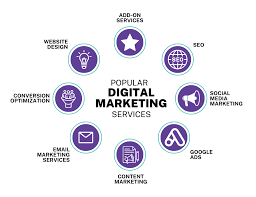On-Site SEO: Optimizing Your Website for Search Engines
In the world of digital marketing, search engine optimization (SEO) plays a crucial role in driving organic traffic to your website. While there are various aspects to SEO, one fundamental component is on-site optimization. This practice involves optimizing your website’s structure, content, and HTML code to improve its visibility and relevance to search engines. In this article, we will explore the key elements of on-site SEO and how you can implement them effectively.
Keyword Research:
Before diving into on-site optimization, it’s essential to conduct thorough keyword research. Identify relevant keywords and phrases that your target audience is likely to use when searching for products or services similar to yours. These keywords will serve as the foundation for your on-site optimization efforts.
Title Tags:
Title tags are HTML elements that define the title of a webpage. They appear as clickable headlines in search engine results pages (SERPs). It’s crucial to include relevant keywords in your title tags while keeping them concise and compelling. Aim for a length of around 50-60 characters to ensure they display properly in SERPs.
Meta Descriptions:
Meta descriptions provide a brief summary of the webpage’s content and appear below the title tag in SERPs. Although they don’t directly impact search engine rankings, well-crafted meta descriptions can significantly influence click-through rates. Include relevant keywords naturally within 150-160 characters while enticing users to click on your link.
URL Structure:
Creating clean and user-friendly URLs is an important aspect of on-site SEO. Incorporate relevant keywords into your URLs while keeping them concise and descriptive. Avoid using unnecessary parameters or numbers that may confuse both search engines and users.
Header Tags:
Header tags (H1-H6) are HTML elements used to structure content hierarchically on a webpage. The H1 tag represents the main heading, followed by subsequent subheadings. Incorporate relevant keywords naturally within your header tags to help search engines understand the content’s structure and relevance.
Content Optimization:
High-quality, informative, and engaging content is not only essential for users but also for search engines. Incorporate relevant keywords throughout your content while maintaining a natural flow. Avoid keyword stuffing, as it may lead to penalties from search engines. Focus on providing value to your audience through well-written and comprehensive content.
Image Optimization:
Images play a crucial role in enhancing the visual appeal of your website, but they can also impact SEO. Optimize your images by compressing them for faster loading times and including descriptive alt tags that incorporate relevant keywords. This helps search engines understand the context of the image and improves accessibility for visually impaired users.
Internal Linking:
Internal linking refers to linking one page of your website to another within its content. It helps search engines discover and navigate through your website’s pages while establishing relationships between them. Incorporate relevant anchor text that includes keywords when linking internally, but ensure it appears natural and provides value to users.
Mobile-Friendliness:
With the increasing use of mobile devices, having a mobile-friendly website is crucial for both user experience and SEO. Ensure that your website is responsive and adapts seamlessly to different screen sizes. Mobile-friendly websites are prioritized by search engines, resulting in better rankings in mobile searches.
Page Speed Optimization:
Page speed is a critical factor in both user experience and SEO. Optimize your website’s loading speed by minimizing file sizes, leveraging browser caching, and optimizing code structure. A fast-loading website not only improves user satisfaction but also increases the chances of ranking higher in search engine results.
By implementing these on-site SEO techniques effectively, you can improve your website’s visibility in search engine rankings, attract more organic traffic, and ultimately achieve better online success. Remember that on-site optimization is an ongoing process, and it’s important to regularly monitor and update your website to stay ahead in the ever-evolving digital landscape.
Essential On-Site SEO Insights: Mastering the Basics for Enhanced Website Performance
- What is on-site SEO and why is it important?
- How do I conduct keyword research for on-site optimization?
- What are title tags and how should I optimize them for SEO?
- How can I optimize my website’s URL structure for better search engine rankings?
- What are header tags and how should I use them to improve on-site SEO?
What is on-site SEO and why is it important?
On-site SEO, also known as on-page SEO, refers to the practice of optimizing various elements of a website to improve its visibility and relevance in search engine rankings. It involves optimizing factors such as meta tags, title tags, URL structure, content quality, internal linking, and more. On-site SEO is important because it helps search engines understand the content and purpose of a website, making it easier for them to index and rank it appropriately. By implementing effective on-site optimization techniques, businesses can increase their chances of appearing higher in search results, attract organic traffic, and ultimately improve their online visibility and success.
How do I conduct keyword research for on-site optimization?
Conducting keyword research for on-site optimization is a crucial step in ensuring the success of your SEO efforts. Start by brainstorming relevant keywords and phrases that are closely related to your business, products, or services. Then, use keyword research tools such as Google Keyword Planner, SEMrush, or Moz Keyword Explorer to gather data on search volume, competition, and related keywords. Look for keywords with a good balance of search volume and competition that align with your website’s goals. Consider long-tail keywords as well, as they often have less competition and can be more targeted to your specific audience. Analyze the search intent behind each keyword to ensure it aligns with the content you plan to create. By conducting thorough keyword research, you can optimize your website with the right keywords that will drive relevant traffic and improve your chances of ranking higher in search engine results.
What are title tags and how should I optimize them for SEO?
Title tags are HTML elements that define the title of a webpage. They play a crucial role in on-site SEO by providing search engines with a concise and relevant description of the page’s content. To optimize title tags for SEO, it’s important to include relevant keywords that accurately reflect the page’s topic. Aim for a length of around 50-60 characters to ensure they display properly in search engine results pages (SERPs). Additionally, crafting compelling and click-worthy titles can improve your website’s click-through rates. By optimizing your title tags effectively, you can enhance your website’s visibility and relevance in search engine rankings, attracting more organic traffic to your site.
How can I optimize my website’s URL structure for better search engine rankings?
Optimizing your website’s URL structure is a crucial aspect of on-site SEO that can greatly impact your search engine rankings. To optimize your URL structure, start by keeping it concise, descriptive, and user-friendly. Incorporate relevant keywords naturally into your URLs to provide search engines with valuable information about the content of your webpages. Avoid using unnecessary parameters or numbers that may confuse both search engines and users. Additionally, ensure that your URLs are readable and easy to understand, as this improves user experience and encourages click-through rates. By implementing these best practices for URL optimization, you can enhance the visibility and relevance of your website in search engine rankings, attracting more organic traffic to your site.
What are header tags and how should I use them to improve on-site SEO?
Header tags, also known as H1-H6 tags, are HTML elements used to structure content hierarchically on a webpage. They play a crucial role in improving on-site SEO by helping search engines understand the organization and relevance of the content. The H1 tag represents the main heading of a page, followed by subsequent subheadings (H2, H3, etc.). When using header tags for on-site SEO, it’s important to incorporate relevant keywords naturally within them. This practice helps search engines recognize the main topics of your content and improves its visibility in search engine results. Additionally, proper usage of header tags enhances the user experience by making the content more scannable and organized.





